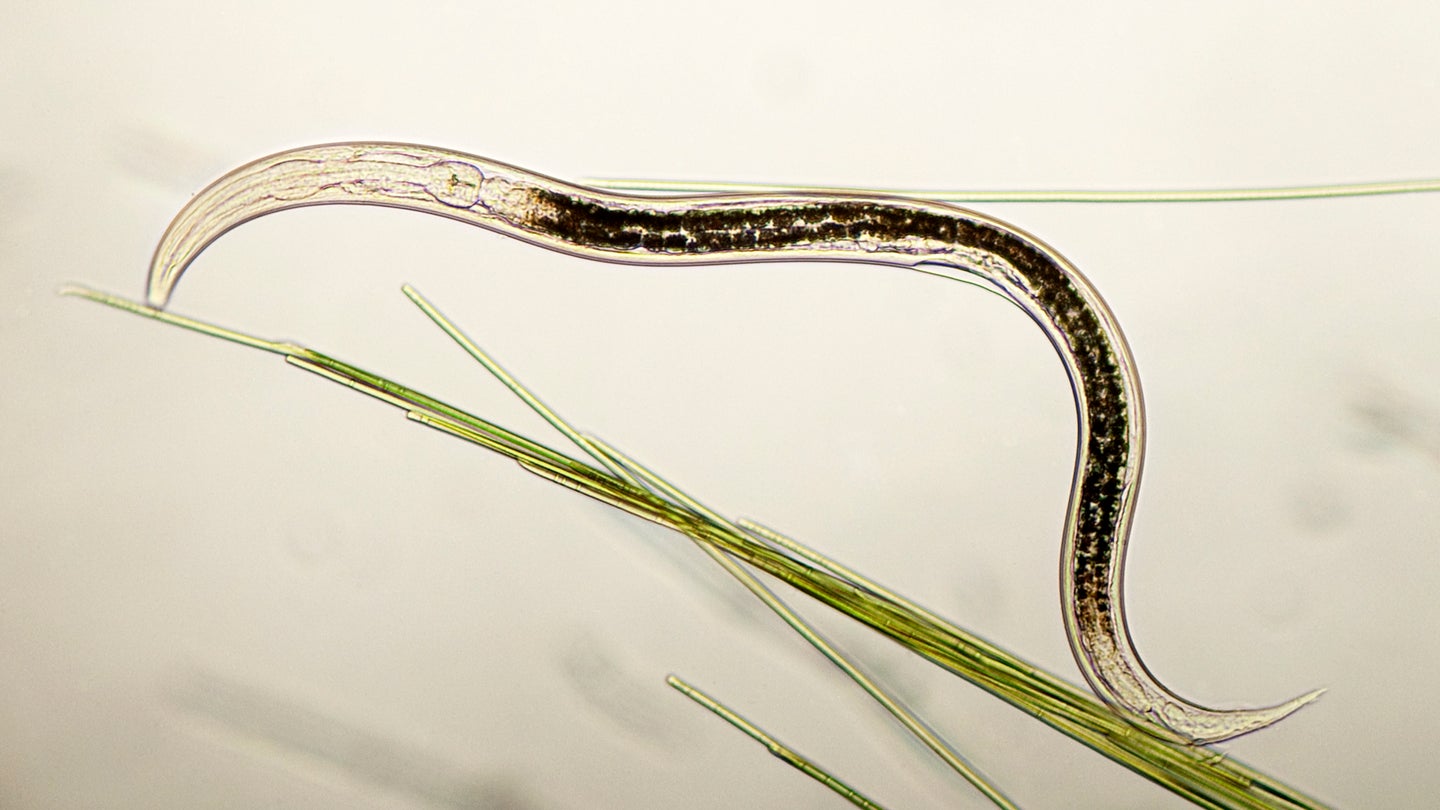Arthrobotrys oligospora sets traps for nematodes as part of a ‘continuous evolutionary arms race.’
Laura Baisas
|
Released Nov 21, 2023 2:00 PM EST

If nematodes have headachesthey may be dreaming about the horror of being consumed alive by a meat-eating fungi called Arthrobotrys oligospora The really genuine fungi can often set gooey traps for these worms. It is among over 700 recognized types of meat-eating fungisNew findings on the standard procedures behind its distinct consuming practices are explained in a research study released November 21st outdoors gain access to journal PLoS Biology
[Related:[Related:Parasitic Fungi Can Fuse A Nematode’s Gut Into One Cell]
Nematodes are not typically the very first thing on A. oligospora’s menu. The fungi generally gets nutrients from rotting raw material. Hunger and the existence of neighboring worms can timely this and other fungis to develop traps to record and consume the worms. Another meat consuming fungis called Pleurotus ostreatus or the oyster mushroom even utilizes a nerve gas as its approach of trapping down nematodes.
A. oligospora has a various method. It typically utilizes sticky secretions to keep the worms determined before they end up being a meal. Earlier research studies have actually revealed a few of the biological procedures and genes behind A. oligospora’s predator-prey relationship, however the molecular information of the procedure have actually stayed usually uncertain.
“I believe it’s interesting to think about that right under our feet in the soil, there are micro-predators like A. oligospora are constantly progressing brand-new methods to hunt, capture and take in the nematode victim and there is [a] continuous evolutionary arms races in between these meat-eating fungis and nematodes,” research study co-author and molecular biologist Yen-Ping Hsueh informs PopSci.
To examine, Hsueh and a group from Academia Sinica in Taipei, Taiwan created a series of laboratory experiments to determine the genes and procedures included when A. oligospora take advantage of a nematode worm types called Caenorhabditis elegansThey utilized a method called RNAseq to see the level of activity taking place in numerous fungi genes at various moments. When A. oligospora Senses a worm, 2 different functions increase– DNA duplication and the production of ribosomes. These are the structures that construct proteins in a cell. Next, activity boosts on a number of the genes that encode the proteins that likely assist the fungi develop and utilize its traps. These traps consist of produced worm-adhesive proteins and a household of proteins the group has actually determined for the very first time.

“The most unexpected finding was the remarkable growth and diversity of the DUF3129 gene household in A. oligospora compared to other fungis,” states Hsueh. “We called members of this household ‘Trap Enriched Proteins’ or TEPs, given that they localize to the fungal traps and add to trap adhesion and nematode capture.”
After A. oligospora has actually extended filamentous structures called hyphae into the worm to absorb it, the activity in the genes that code for a range of enzymes called proteases likewise increases. A group called metalloproteases that break down other proteins is increased a lot more. The group thinks this recommends that A. oligospora usages these proteases to assist in food digestion of worms like nematodes.
[Related:[Related:Nightmare-fuel fungis exist in reality.]
This research study might work as the structure for more research study into other fungal predator-prey relationships and how A. oligospora feeds upon these worms.
“Our next actions are to even more examine the molecular function of how traps follow nematodes,” states Hsueh. “It’s unexpected how the traps capture nematodes in such a brief time, and the binding of the traps are strong enough that the nematodes practically never ever get a possibility to leave after being caught.”

Discover more from CaveNews Times
Subscribe to get the latest posts sent to your email.










![[Highlight] After the game, a kid came into the court hoping to get an autograph, Wemby gives his jersey instead](https://cavemangardens.art/storage/2024/11/174395-highlight-after-the-game-a-kid-came-into-the-court-hoping-to-get-an-autograph-wemby-gives-67330c30593ab-360x180.jpg)














![Exploring the Serene Beauty of Nature: A Reflection on [YouTube video title]](https://cavemangardens.art/storage/2024/04/114803-exploring-the-serene-beauty-of-nature-a-reflection-on-youtube-video-title-360x180.jpg)























